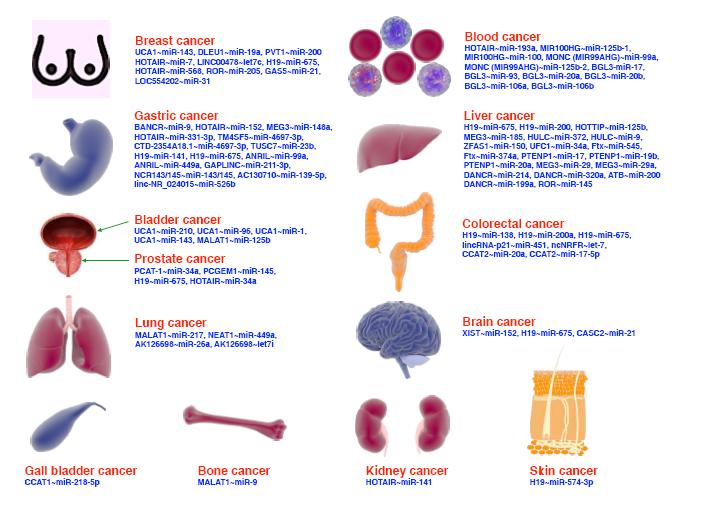| 1. |
Bray F, Laversanne M, Sung H, et al. Global cancer statistics 2022: GLOBOCAN estimates of incidence and mortality worldwide for 36 cancers in 185 countries. CA Cancer J Clin, 2024, 74(3): 229-263.
|
| 2. |
郝运, 李川, 文天夫, 等. 全球及中国的肝癌流行病学特征: 基于《2022全球癌症统计报告》解读. 中国普外基础与临床杂志, 2024, 31(7): 781-789.
|
| 3. |
Lu C, Rong D, Zhang B, et al. Current perspectives on the immunosuppressive tumor microenvironment in hepatocellular carcinoma: challenges and opportunities. Mol Cancer, 2019, 18(1): 130. doi: 10.1186/s12943-019-1047-6.
|
| 4. |
中国医师协会肝癌专业委员会. 肝细胞癌伴微血管侵犯诊断和治疗中国专家共识 (2024版). 中华消化外科杂志, 2024, 23(2): 153-164.
|
| 5. |
Calderaro J, Petitprez F, Becht E, et al. Intra-tumoral tertiary lymphoid structures are associated with a low risk of early recurrence of hepatocellular carcinoma. J Hepatol, 2019, 70(1): 58-65.
|
| 6. |
Tabrizian P, Jibara G, Shrager B, et al. Recurrence of hepatocellular cancer after resection: patterns, treatments, and prognosis. Ann Surg, 2015, 261(5): 947-955.
|
| 7. |
Feng LH, Dong H, Lau WY, et al. Novel microvascular invasion-based prognostic nomograms to predict survival outcomes in patients after R0 resection for hepatocellular carcinoma. J Cancer Res Clin Oncol, 2017, 143(2): 293-303.
|
| 8. |
Xu XF, Diao YK, Zeng YY, et al. Association of severity in the grading of microvascular invasion with long-term oncological prognosis after liver resection for early-stage hepatocellular carcinoma: a multicenter retrospective cohort study from a hepatitis B virus-endemic area. Int J Surg, 2023, 109(4): 841-849.
|
| 9. |
Lei Z, Li J, Wu D, et al. Nomogram for preoperative estimation of microvascular invasion risk in hepatitis B virus-related hepatocellular carcinoma within the Milan Criteria. JAMA Surg, 2016, 151(4): 356-363.
|
| 10. |
Wang H, Liu R, Mo H, et al. A novel nomogram predicting the early recurrence of hepatocellular carcinoma patients after R0 resection. Front Oncol, 2023, 13: 1133807. doi: 10.3389/fonc.2023.1133807.
|
| 11. |
Ryu T, Takami Y, Wada Y, et al. A clinical scoring system for predicting microvascular invasion in patients with hepatocellular carcinoma within the Milan Criteria. J Gastrointest Surg, 2019, 23(4): 779-787.
|
| 12. |
Yamashita YI, Imai K, Yusa T, et al. Microvascular invasion of single small hepatocellular carcinoma ≤3 cm: predictors and optimal treatments. Ann Gastroenterol Surg, 2018, 2(3): 197-203.
|
| 13. |
Kim DY, Toan BN, Tan CK, et al. Utility of combining PIVKA-Ⅱ and AFP in the surveillance and monitoring of hepatocellular carcinoma in the Asia-Pacific region. Clin Mol Hepatol, 2023, 29(2): 277-292.
|
| 14. |
Hong YM, Cho M, Yoon KT, et al. Risk factors of early recurrence after curative hepatectomy in hepatocellular carcinoma. Tumour Biol, 2017, 39(10): 1010428317720863.
|
| 15. |
Yang J, Qian J, Wu Z, et al. Exploring the factors affecting the occurrence of postoperative MVI and the prognosis of hepatocellular carcinoma patients treated with hepatectomy: a multicenter retrospective study. Cancer Med, 2024, 13(3): e6933. doi: 10.1002/cam4.6933.
|
| 16. |
Apte RS, Chen DS, Ferrara N. VEGF in signaling and disease: beyond discovery and development. Cell, 2019, 176(6): 1248-1264.
|
| 17. |
Wang H, Lu Y, Liu R, et al. A non-invasive nomogram for preoperative prediction of microvascular invasion risk in hepatocellular carcinoma. Front Oncol, 2021, 11: 745085. doi: 10.3389/fonc.2021.745085.
|
| 18. |
Ha Y, Kim TH, Shim JE, et al. Circulating tumor cells are associated with poor outcomes in early-stage hepatocellular carcinoma: a prospective study. Hepatol Int, 2019, 13(6): 726-735.
|
| 19. |
Zhou J, Zhang Z, Zhou H, et al. Preoperative circulating tumor cells to predict microvascular invasion and dynamical detection indicate the prognosis of hepatocellular carcinoma. BMC Cancer, 2020, 20(1): 1047. doi: 10.1186/s12885-020-07488-8.
|
| 20. |
Zheng X, Xu YJ, Huang J, et al. Predictive value of radiomics analysis of enhanced CT for three-tiered microvascular invasion grading in hepatocellular carcinoma. Med Phys, 2023, 50(10): 6079-6095.
|
| 21. |
郑丽荣, 沈俊颐, 陈卫霞, 等. CT增强扫描预测肝细胞癌微血管侵犯、根治性切除术后早期复发. 中国普外基础与临床杂志, 2016, 23(11): 1400-1406.
|
| 22. |
Meng XP, Wang YC, Zhou JY, et al. Comparison of MRI and CT for the prediction of microvascular invasion in solitary hepatocellular carcinoma based on a non-radiomics and radiomics method: which imaging modality is better? J Magn Reson Imaging, 2021, 54(2): 526-536.
|
| 23. |
瞿成名, 李昆, 蔡萍, 等. 基于MRI影像组学的特征模型预测肝细胞癌微血管侵犯的研究. 中国普外基础与临床杂志, 2021, 28(2): 175-180.
|
| 24. |
Zhao W, Liu W, Liu H, et al. Preoperative prediction of microvascular invasion of hepatocellular carcinoma with IVIM diffusion-weighted MR imaging and Gd-EOB-DTPA-enhanced MR imaging. PLoS One, 2018, 13(5): e0197488. doi: 10.1371/journal.pone.0197488.
|
| 25. |
Zhang D, Wei Q, Wu GG, et al. Preoperative prediction of microvascular invasion in patients with hepatocellular carcinoma based on radiomics nomogram using contrast-enhanced ultrasound. Front Oncol, 2021, 11: 709339. doi: 10.3389/fonc.2021.709339.
|
| 26. |
Xin Z, Li J, Zhang H, et al. Cancer genomic alterations can be potential biomarkers predicting microvascular invasion and early recurrence of hepatocellular carcinoma. Front Oncol, 2022, 12: 783109. doi: 10.3389/fonc.2022.783109.
|
| 27. |
Wang J, Ding ZW, Chen K, et al. A predictive and prognostic model for hepatocellular carcinoma with microvascular invasion based TCGA database genomics. BMC Cancer, 2021, 21(1): 1337. doi: 10.1186/s12885-021-09047-1.
|
| 28. |
Zhang Y, Wei Q, Huang Y, et al. Deep learning of liver contrast-enhanced ultrasound to predict microvascular invasion and prognosis in hepatocellular carcinoma. Front Oncol, 2022, 12: 878061. doi: 10.3389/fonc.2022.878061.
|
| 29. |
Song D, Wang Y, Wang W, et al. Using deep learning to predict microvascular invasion in hepatocellular carcinoma based on dynamic contrast-enhanced MRI combined with clinical parameters. J Cancer Res Clin Oncol, 2021, 147(12): 3757-3767.
|
| 30. |
Yang Y, Zhou Y, Zhou C, et al. Deep learning radiomics based on contrast enhanced computed tomography predicts microvascular invasion and survival outcome in early stage hepatocellular carcinoma. Eur J Surg Oncol, 2022, 48(5): 1068-1077.
|
| 31. |
Li SH, Mei J, Cheng Y, et al. Postoperative adjuvant hepatic arterial infusion chemotherapy with FOLFOX in hepatocellular carcinoma with microvascular invasion: a multicenter, phase Ⅲ, randomized study. J Clin Oncol, 2023, 41(10): 1898-1908.
|
| 32. |
Bai S, Hu L, Liu J, et al. Prognostic nomograms combined adjuvant lenvatinib for hepatitis B virus-related hepatocellular carcinoma with microvascular invasion after radical resection. Front Oncol, 2022, 12: 919824. doi: 10.3389/fonc.2022.919824.
|
| 33. |
Zhang W, Zhang B, Chen XP. Adjuvant treatment strategy after curative resection for hepatocellular carcinoma. Front Med, 2021, 15(2): 155-169.
|
| 34. |
Wei W, Jian PE, Li SH, et al. Adjuvant transcatheter arterial chemoembolization after curative resection for hepatocellular carcinoma patients with solitary tumor and microvascular invasion: a randomized clinical trial of efficacy and safety. Cancer Commun (Lond), 2018, 38(1): 61.
|
| 35. |
Gai X, Zhou P, Xu M, et al. Hyperactivation of IL-6/STAT3 pathway leaded to the poor prognosis of post-TACE HCCs by HIF-1α/SNAI1 axis-induced epithelial to mesenchymal transition. J Cancer, 2020, 11(3): 570-582.
|
| 36. |
Qi W, Peng W, Qi X, et al. TIDE: adjuvant tislelizumab plus donafenib combined with transarterial chemoembolization for high-risk hepatocellular carcinoma after surgery: protocol for a prospective, single-arm, phase Ⅱ trial. Front Oncol, 2023, 13: 1138570. doi: 10.3389/fonc.2023.1138570.
|
| 37. |
Peng Z, Fan W, Liu Z, et al. Adjuvant transarterial chemoembolization with sorafenib for portal vein tumor thrombus: a randomized clinical trial. JAMA Surg, 2024, 159(6): 616-624.
|
| 38. |
Tang Y, Zhang J, Chen G, et al. Efficacy of adjuvant transarterial chemoembolization combined antiviral therapy for HBV-related HCC with MVI after hepatic resection: a multicenter study. Asian Pac J Cancer Prev, 2022, 23(8): 2695-2703.
|
| 39. |
He M, Li Q, Zou R, et al. Sorafenib plus hepatic arterial infusion of oxaliplatin, fluorouracil, and leucovorin vs sorafenib alone for hepatocellular carcinoma with portal vein invasion: a randomized clinical trial. JAMA Oncol, 2019, 5(7): 953-960.
|
| 40. |
Mei J, Li SH, Li QJ, et al. Anti-PD-1 immunotherapy improves the efficacy of hepatic artery infusion chemotherapy in advanced hepatocellular carcinoma. J Hepatocell Carcinoma, 2021, 8: 167-176.
|
| 41. |
Wang L, Wang W, Rong W, et al. Postoperative adjuvant treatment strategy for hepatocellular carcinoma with microvascular invasion: a non-randomized interventional clinical study. BMC Cancer, 2020, 20(1): 614. doi: 10.1186/s12885-020-07087-7.
|
| 42. |
Chen J, He K, Han Y, et al. Clinical efficacy and safety of external radiotherapy combined with sorafenib in the treatment of hepatocellular carcinoma: a systematic review and meta-analysis. Ann Hepatol, 2022, 27(4): 100710. doi: 10.1016/j.aohep.2022.100710.
|
| 43. |
Li H, Wu Z, Chen J, et al. External radiotherapy combined with sorafenib has better efficacy in unresectable hepatocellular carcinoma: a systematic review and meta-analysis. Clin Exp Med, 2023, 23(5): 1537-1549.
|
| 44. |
Zhang XP, Chai ZT, Gao YZ, et al. Postoperative adjuvant sorafenib improves survival outcomes in hepatocellular carcinoma patients with microvascular invasion after R0 liver resection: a propensity score matching analysis. HPB (Oxford), 2019, 21(12): 1687-1696.
|
| 45. |
Li J, Wang WQ, Zhu RH, et al. Postoperative adjuvant tyrosine kinase inhibitors combined with anti-PD-1 antibodies improves surgical outcomes for hepatocellular carcinoma with high-risk recurrent factors. Front Immunol, 2023, 14: 1202039. doi: 10.3389/fimmu.2023.1202039.
|
| 46. |
Qin S, Chen M, Cheng AL, et al. Atezolizumab plus bevacizumab versus active surveillance in patients with resected or ablated high-risk hepatocellular carcinoma (IMbrave050): a randomised, open-label, multicentre, phase 3 trial. Lancet, 2023, 402(10415): 1835-1847.
|
| 47. |
You H, Wang F, Li T, et al. Guidelines for the prevention and treatment of chronic hepatitis B (version 2022). J Clin Transl Hepatol, 2023, 11(6): 1425-1442.
|
| 48. |
Liu K, Duan J, Liu H, et al. Precancer antiviral treatment reduces microvascular invasion of early-stage hepatitis B-related hepatocellular carcinoma. Sci Rep, 2019, 9(1): 2220. doi: 10.1038/s41598-019-39440-7.
|
| 49. |
Li Z, Lei Z, Xia Y, et al. Association of preoperative antiviral treatment with incidences of microvascular invasion and early tumor recurrence in hepatitis B virus-related hepatocellular carcinoma. JAMA Surg, 2018, 153(10): e182721. doi: 10.1001/jamasurg.2018.2721.
|
| 50. |
Huang S, Xia Y, Lei Z, et al. Antiviral therapy inhibits viral reactivation and improves survival after repeat hepatectomy for hepatitis B virus-related recurrent hepatocellular carcinoma. J Am Coll Surg, 2017, 224(3): 283-293.e4.
|




